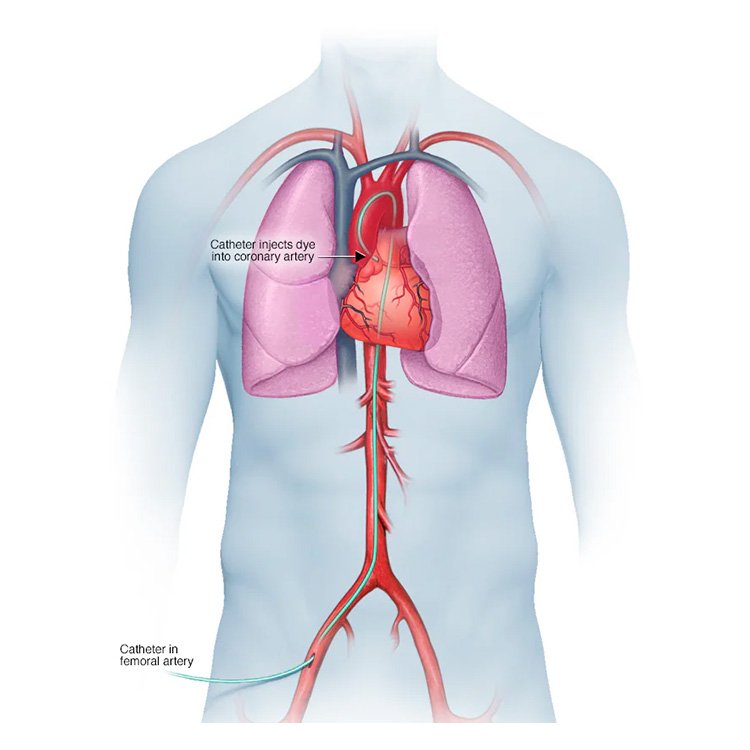Coronary Angiography
Coronary Angiography is a diagnostic procedure used to visualize the coronary arteries, which supply blood to the heart muscle. It is performed to detect blockages or narrowing in the coronary arteries, typically caused by coronary artery disease (CAD). This procedure helps cardiologist assess the severity of the condition and determine the appropriate treatment, such as angioplasty or coronary artery bypass surgery.
Procedure
- Preparation: The patient is usually awake but sedated, and a local anesthetic is applied to the access site (typically the groin, arm, or wrist).
- Catheter Insertion: A thin, flexible tube called a catheter is inserted through a blood vessel and guided toward the coronary arteries.
- Contrast Dye Injection: Once the catheter reaches the coronary arteries, a contrast dye is injected through the catheter. The dye makes the arteries visible on fluoroscopy imaging.
- Fluroscopy: The X-ray (fluoroscopy) captures real-time images of the arteries, allowing the physician to see any blockages, narrowing, or abnormalities in blood flow.

Importance
Coronary angiography is crucial for diagnosing coronary artery disease, identifying blockages, and planning interventions like stent placement or surgery. It helps prevent heart attacks by allowing doctors to make informed decisions regarding treatment.
